When most people think of the Industrial Revolution, they think of scientific and technological advancements.
During this time, tools and methods were invented that greatly sped up the time it took to produce items such as thread, textiles, and cotton. Additionally, countless innovators discovered new ways of smelting iron and ore, and James Watt invented the steam engine.
However, in addition to all the progress that the Industrial Revolution brought, it also played a crucial role in promoting child labor. While it was more prominent in some areas than others, nearly 20% of the workforce during the Industrial Revolution consisted of children and teenagers under 16 years old.
In this post, we’ll examine why there was such a boom in child labor during this time. We’ll also delve into the types of jobs children performed, their working conditions, and where we are today concerning child labor.
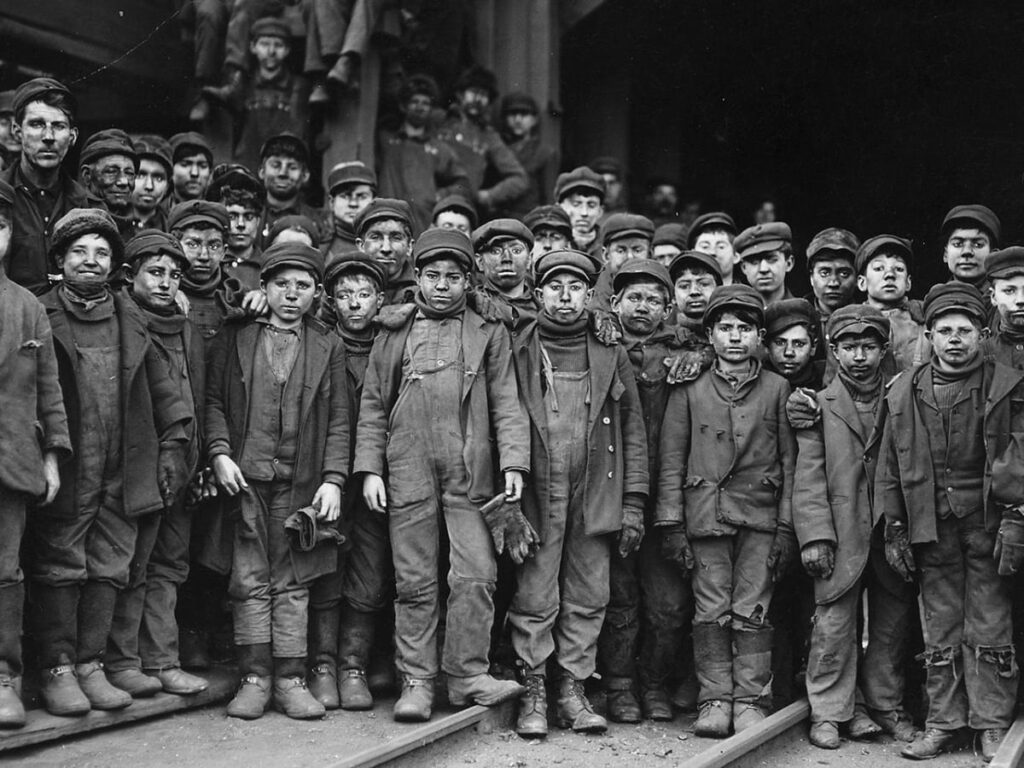
What Was the Industrial Revolution?
The Industrial Revolution was a significant time in both US and world history. Numerous tools and technologies were invented to boost the production of goods, increase efficiency, and revolutionize the workforce.
Most historians divide the Industrial Revolution into two distinct periods: the First and Second Industrial Revolutions. The First Industrial Revolution stretched from the late 1700s to the mid-1800s and originated mainly in Great Britain and partially in the United States.
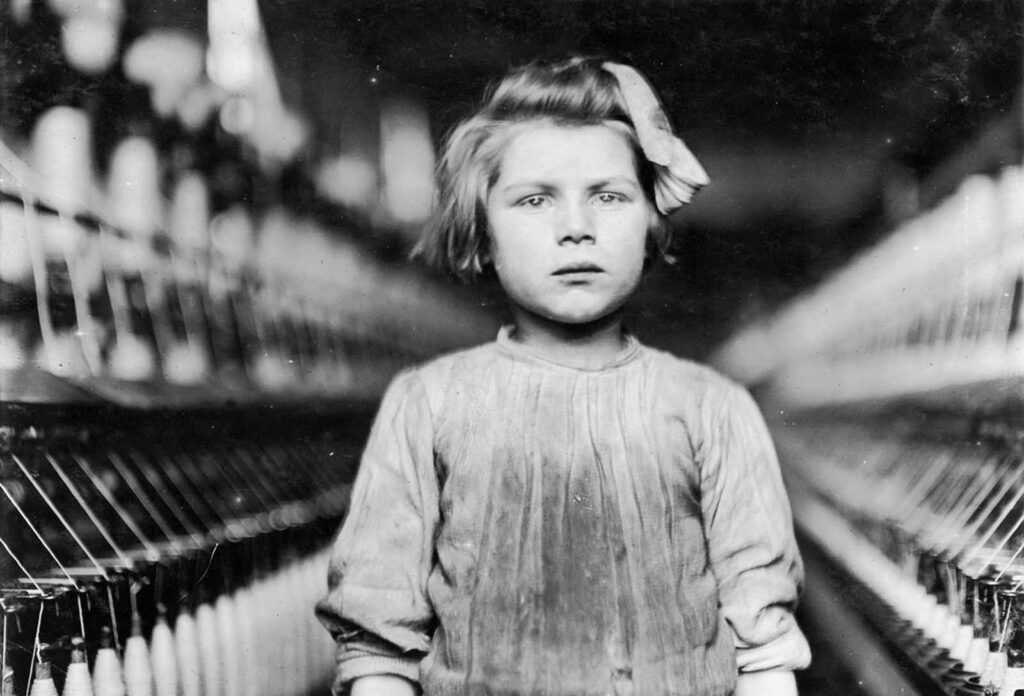
The Second Industrial Revolution lasted from 1870 through 1940 and mostly originated in the United States. Some of the most notable inventions and innovations during the Industrial Revolution include the Spinning Jenny, the steam engine, the cotton gin, sewing machines, power looms, and the combustion engine.
In other words, the Industrial Revolution impacted the world in the 18 and 1900s, similar to how the Internet and technology are affecting the world today.
How Did the Industrial Revolution Affect Child Labor?
While child labor didn’t necessarily start during the Industrial Revolution, it made it more popular than ever. Additionally, while the United States got a bad rap for child labor during the Industrial Revolution, it was a global problem and not limited to a single country.
Child Labor During the First Industrial Revolution
While child labor was better documented during the second Industrial Revolution, it was more prevalent in the first.
Depending on where you lived, nearly half of the workforce consisted of children. For example, in several New England states, 40 to 50% of all mill employees were children.
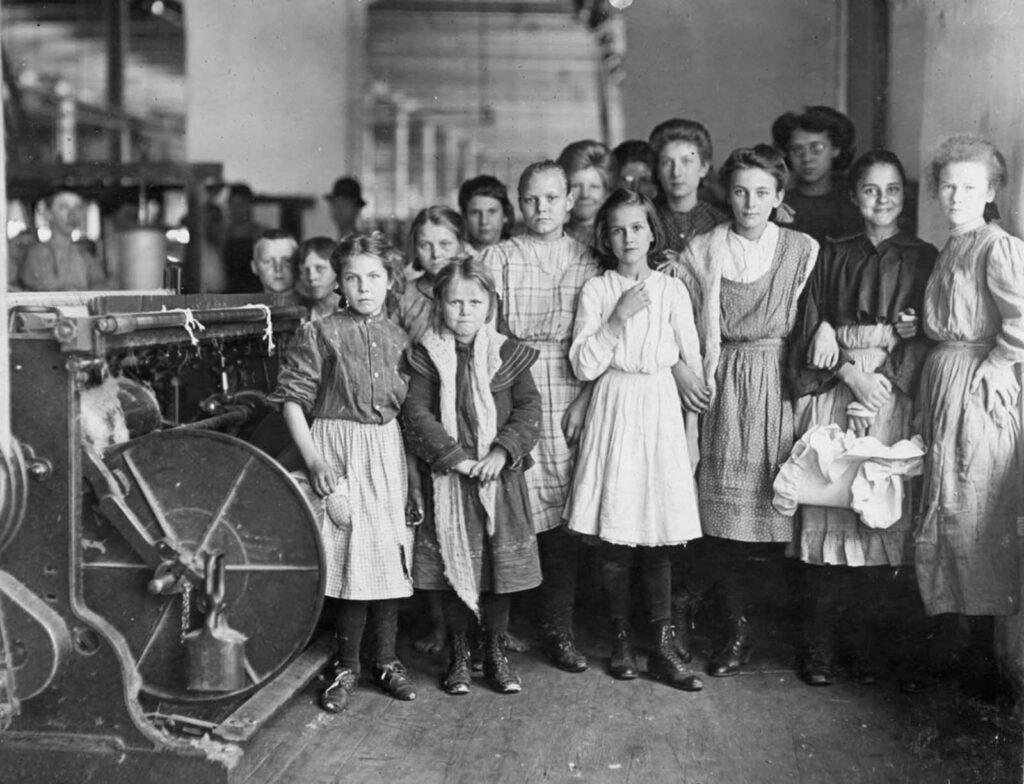
A big reason for this was the textile industry boom in the late 1700s when Samuel Slater built the first water-powered cotton gin in America.
In addition to the textile and cotton industries, factories, farms, and mills employed thousands of children during the First Industrial Revolution.
Child Labor During the Second Industrial Revolution
According to a US census in the 1870s, 12% of all children between 10 and 15 were employed in the workforce. That number nearly doubled in the early 1900s when 20% of all children between 10 and 15 worked.
While child labor slowly began to taper off in the 1910s and 20s, children made up a decent percentage of the workforce until the mid-1900s.
Rather than the cotton and textile industries, most children worked in mines, farms, and factories during the Second Industrial Revolution.
Factors That Affected Child Labor During the Industrial Revolution
Several contributing factors led to the high number of child laborers during the Industrial Revolution.
The End of Slavery
When the Civil War effectively ended slave labor in 1865, it led to a sudden increase in child labor at the start of the Second Industrial Revolution in 1870.
No longer could southern plantations, farms, factories, and mills get free labor through slavery. So, the next best option was highly discounted child labor.
While the end of slavery affected child labor more in the South than in the North, it impacted both parts of the country.
Not Enough Adults
The Industrial Revolution led to an increase in child labor because there simply weren’t enough adults to handle all the work.
Factories, mills, and mines, among other industries, needed more men and women to keep up with production. As a result, they turned to children to pick up the slack.
The Attitude Toward Education
Parents and employers during the Industrial Revolution also placed more value on work ethic and making money than they did on education.
As a result, instead of children going through elementary, middle, and high school, most kids only learned basic reading, writing, and arithmetic. Some didn’t even learn these basics.
Monetary Reasons
As with most things during the Industrial Revolution, money also played a significant factor in the increase in child labor.
While not quite free, children were paid far less than adults, in many cases only making 10 to 20% of their grown-up counterparts.
Children also weren’t entitled to the same benefits as adults and were cheaper to feed and house.
Immigration and Child Labor During the Industrial Revolution
The rising number of people immigrating to America from Europe and other countries also played a role in child labor during the Industrial Revolution.
Due to various hardships, famines, and depressions in Europe, immigrants from Ireland, England, and other parts of the country began immigrating to the US in the mid to late 1800s.
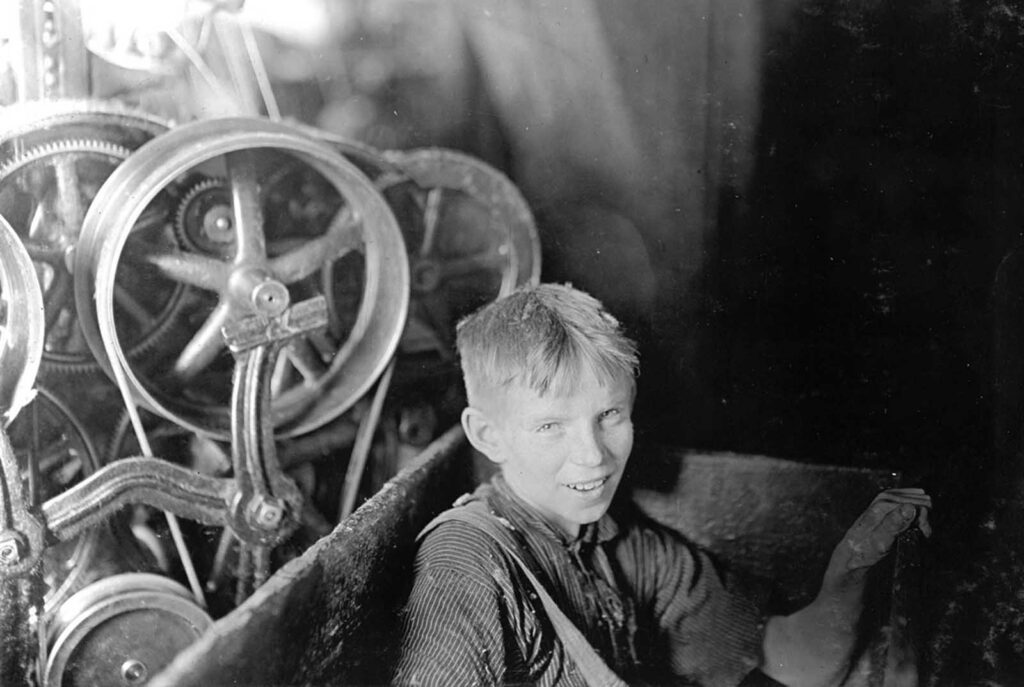
Around this time, the government started passing laws outlawing child labor. However, many of these laws didn’t apply to immigrants, so industries began employing the children of immigrants instead of native-born children.
What Were the Working Conditions Like for Children?
Just because they were children didn’t mean employers treated them differently from adult laborers. On the contrary, in many cases, children were treated much more severely than adults because they didn’t have the strength, knowledge, and ability to fight back against poor working conditions.
In mills, children worked on average for 10 to 12 hours per day, five or six days per week. Canneries employed children as young as six years old, and they worked for up to 18 hours per day, six days per week.
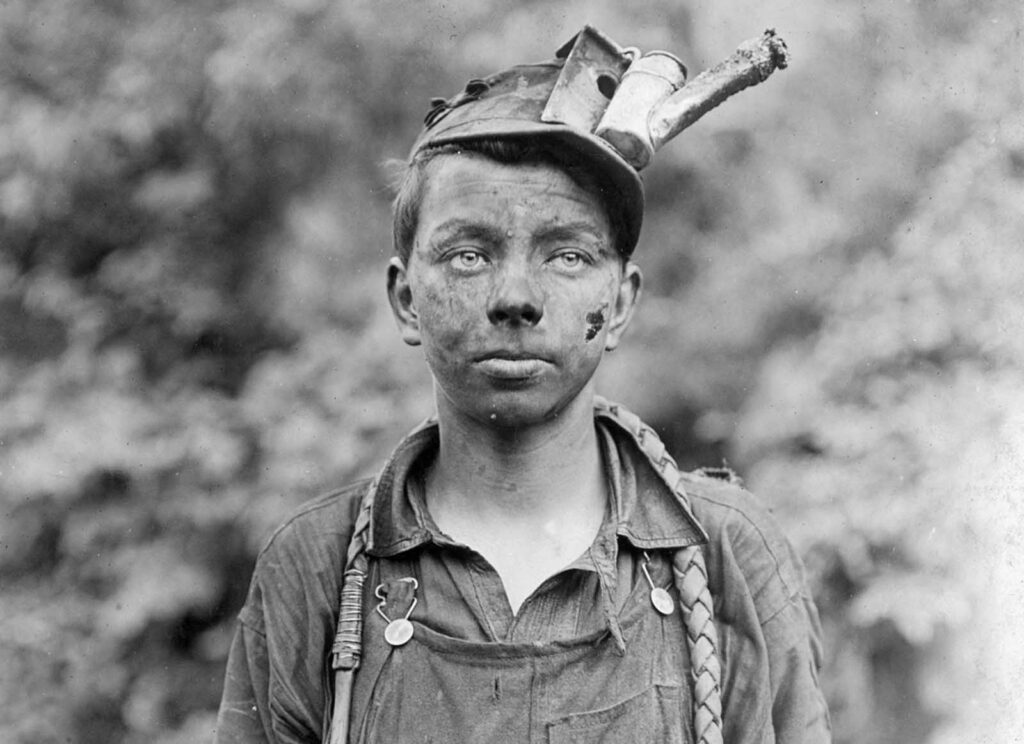
Additionally, working conditions for children were abysmal. As a result, illness and injuries were common because of poor working conditions and unachievable expectations.
In mines, factories, and farms, for instance, children as young as thirteen would work for 14 hours per day and were expected to perform the same duties as men in their twenties and thirties. As a result, many children lost limbs, broke bones, and suffered injuries from which they would never recover.
On top of everything else, children were paid far less than adults during all phases of the Industrial Revolution. For example, children typically made between 50 and 60 cents per day in the coal mines. In some cases, children weren’t financially compensated but worked instead in exchange for food and housing.
Finally, children were often placed in dangerous situations in the workplace during the Industrial Revolution. Factories and industries that used steam engines, motors, and other mechanics were especially dangerous.
Children often repaired equipment in tight, dangerous spaces because they were smaller and more agile than adults, which often resulted in injury.
Steps Taken to Reduce the Number of Child Laborers
In the mid-1800s, education reformers began emphasizing the need for education. However, aside from a few states that implemented minimum educational requirements, this did little to stem the tide of child labor.
It wasn’t until the late 1800s that the government began making a concerted effort to end, or at least regulate child labor. During that time, they passed hundreds of laws related to working conditions and hours for children. But, despite their efforts, employers would find loopholes in these laws, and child labor persisted.
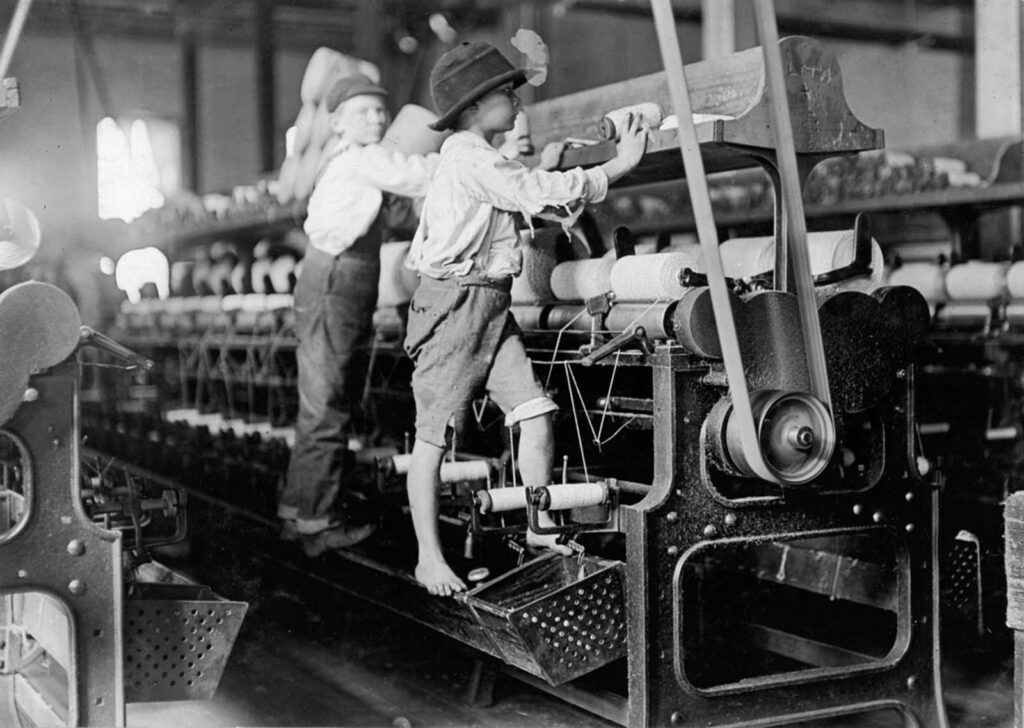
Finally, in 1904, the National Child Labor Committee was created. The NCLC and several state-run offshoots began making a dent in the prevalence of child labor.
They utilized a combination of photographs, pamphlets, leaflets, and other tactics to incite outrage toward child labor among the general public.
Social reform and changes also played a big role in the slow decline of child labor during the Industrial Revolution.
The Women’s Rights Movement and Temperance Movement took place around the same time the NCLC was created. The same groups that supported these movements also fought to pass laws regulating child labor.
However, despite these efforts, Congress and the Supreme Court failed to successfully pass laws and legislation that made child labor illegal outright.
It wasn’t until the Fair Labor Standards Act of 1938 that the government placed limitations on what children could do, their working hours, and the minimum age they could legally start working.
Under the Fair Labor Standards Act, children couldn’t be full-time employees until they were 16. This Act also established the first federal minimum wage and placed additional limitations on child labor.
Sources
Child Labor: Laws & Definition – HISTORY – HISTORY
224-120 final Pdf.pdf (dol.gov)

